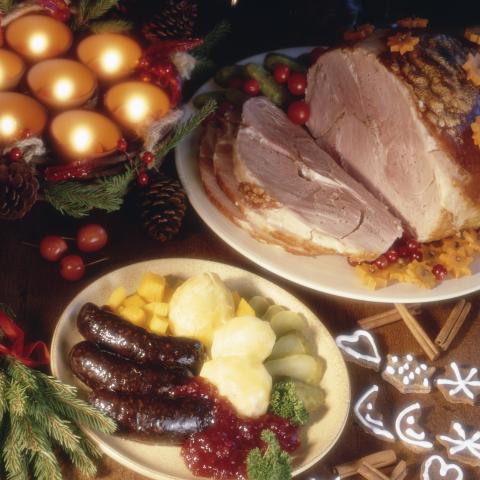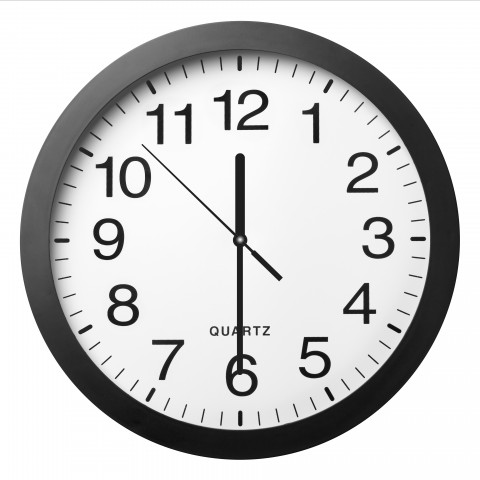
Today, you’ll learn about tenses in the Hindi language—a crucial topic for any beginner.
Imagine talking about your future plans in the past tense! How puzzling would that be? And that’s just the tip of the iceberg. Without using the correct tenses, it would be difficult for you to express or understand when a given event took place. This would lead to much confusion, not to mention the exchange of incorrect information.
To avoid such embarrassment, you really ought to understand how the grammatical tenses work in Hindi. In our lesson today, we’ll talk about how to form tenses in Hindi and when each one should be used.
It may seem difficult now, but with time, you’ll become familiar with the proper usage of each tense and its subcategories.

What are the Hindi tenses?
Important Note: For more clarity, we’ll be using the same three verbs in Hindi as examples throughout the article. The infinitive forms of these verbs are:
- खाना (khaaNaa) = “to eat”
- जाना (jaaNaa) = “to go”
- सोना (SoNaa) = “to sleep”
 Table of Contents
Table of Contents
- The Different Hindi Verb Tenses
- Present Tense = वर्तमान काल (varTamaaN kaaL)
- Past Tense = भूतकाल (bhuuTakaaL)
- Future Tense = भविष्य काल (bhavisy kaaL)
- Verb Conjugation in Hindi
- Break Through with HindiPod101.com
1. The Different Hindi Verb Tenses
In Hindi grammar, there are three main types of tenses. These are the present tense, past tense, and future tense. Each tense is again divided into three subcategories.
1. Present Tense = वर्तमान काल (varTamaaN kaaL)- a. Simple present
b. Present continuous
c. Present perfect
- a. Simple past
b. Past continuous
c. Past perfect
- a. Simple future
b. Future continuous
c. Future perfect
In the following sections, we’ll be discussing these in the same order. Here we go!

The journey through time
2. Present Tense = वर्तमान काल (varTamaaN kaaL)
The present tense is used when the action is happening at the current moment. The basic types of present tense are simple present, present continuous, and present perfect tense.
A- Simple Present Tense
The simple present tense in Hindi is normally used with indefinite verbs, which are verbs that indicate a fixed pattern, such as a routine or habit.
To help you better understand this concept, here are a few examples.
| Simple Present Tense | |
| अमर सुबह सेब खाता है। amar Subah Seb khaaTaa hai. | “Amar eats an apple in the morning.” |
| पारुल रोज़ स्कूल जाती है। paaruL roz SkuuL jaaTii hai. | “Parul goes to school daily.” |
| बच्चे दोपहर में सोते हैं। bacce Dopahar men SoTe hain. | “The kids sleep in the afternoon.” |
As you can see, each verb form gives us a hint that the said action is taking place on a regular basis.
B- Present Continuous Tense
The present continuous tense in Hindi expresses an action that is happening now, in the exact moment.
In English, this tense is formed by using a conjugated form of the verb “to be” and then adding “-ing” to the end of the root form of the main verb:
- [“to be” verb] + “eat” + “ing” = to be eating
In Hindi, these two steps are replaced by simply using one of these terms:
- रहा है (rahaa hai)
- रही है (rahii hai)
- रहे हैं (rahe hain)
Here are a few examples of how this works:
| Present Continuous Tense | |
| अमर सेब खा रहा है। amar Seb khaa rahaa hai. | “Amar is eating an apple.” |
| पारुल स्कूल जा रही है। paaruL SkuuL jaa rahii hai. | “Parul is going to school.” |
| बच्चे सो रहे हैं। bacce So rahe hain. | “The kids are sleeping.” |

Being in the present moment
C- Present Perfect Tense
We use the present perfect tense to indicate that an action was completed not long ago.
In English, you would form this tense by using the auxiliary “has” or “have,” followed by the third form of the main verb. For example:
- has / have + eaten
In Hindi, you would replace the “has” or “have” with one of these terms:
- चुका है (cukaa hai)
- चुकी है (cukii hai)
- चुके हैं (cuke hain)
Let’s take a look:
| Present Perfect Tense | |
| अमर सेब खा चुका है। amar Seb khaa cukaa hai. | “Amar has eaten an apple.” |
| पारुल स्कूल जा चुकी है। paaruL SkuuL jaa cukii hai. | “Parul has gone to school.” |
| बच्चे सो चुके हैं। bacce So cuke hain. | “The kids have gone to sleep.” |
3. Past Tense = भूतकाल (bhuuTakaaL)
The past tense in Hindi is used to talk about events that have already taken place. The most commonly used subcategories of this tense are the simple past, past continuous, and past perfect.
A- Simple Past Tense
In Hindi, we use either indefinite verbs or the second form of verbs to make the simple past tense. This tense can be used to indicate a past habit or the completion of an action in the past.

I loved the dinner last night!
Here are some examples of what the simple past tense in Hindi looks like:
| Simple Past Tense | |
| अमर ने सेब खाया। amar Ne Seb khaayaa. Or अमर सेब खाता था। amar Seb khaaTaa THaa. | “Amar ate an apple.” Or “Amar used to eat an apple.” |
| पारुल स्कूल गयी। paaruL SkuuL gayii. Or पारुल स्कूल जाती थी। paaruL SkuuL jaaTii THii. | “Parul went to school.” Or “Parul used to go to school.” |
| बच्चे सोये। bacce Soye. Or बच्चे सोते थे। bacce SoTe THe. | “The kids slept.” Or “The children used to sleep.” |
B- Past Continuous Tense
We use the past continuous tense to describe a continuous action that was taking place at a specific time in the past.
In English, this tense is formed by using the auxiliary “was” or “were,” followed by the root form of the main verb + “-ing.” For example:
- [was / were] + eat + ing = was/were eating
In Hindi, you would replace these two elements with one of these terms:
- रहा था (rahaa THaa)
- रही थी (rahii THii)
- रहे थे (rahe THe)
Here are some examples for you:
| Past Continuous Tense | |
| अमर सेब खा रहा था। amar Seb khaa rahaa THaa. | “Amar was eating an apple.” |
| पारुल स्कूल जा रही थी। paaruL SkuuL jaa rahii THii. | “Parul was going to school.” |
| बच्चे सो रहे थे। bacce So rahe THe. | “The kids were sleeping.” |
C- Past Perfect Tense
The past perfect tense is used to express actions that were performed and completed in the past.
In English, you would form this tense by using the auxiliary “had,” followed by the third form of the main verb:
- [had] + eaten = had eaten
In Hindi, the auxiliary “had” is replaced by one of these terms:
- चुका था (cukaa THaa)
- चुकी थी (cukii THii)
- चुके थे (cuke THe)
For example:
| Past Perfect Tense | |
| अमर सेब खा चुका था। amar Seb khaa cukaa THaa. | “Amar had eaten an apple.” |
| पारुल स्कूल जा चुकी थी। paaruL SkuuL jaa cukii THii. | “Parul had gone to school.” |
| बच्चे सो चुके थे। bacce So cuke THe. | “The kids had slept.” |
4. Future Tense = भविष्य काल (bhavisy kaaL)
We’ve finally arrived at the future tense!
The future tense in Hindi is used to talk about events that are yet to take place. The most commonly used future tenses are the simple future, future continuous, and future perfect.

Will you meet me tomorrow?
A- Simple Future Tense
As the name suggests, the simple future tense indicates activities that are certain to happen in the future.
Note in the examples below that all three sentences end with either गा (gaa), गी (gii), or गे (ge). This is the trademark of the future tense in Hindi.
| Simple Future Tense | |
| अमर सेब खाएगा। amar Seb khaayegaa. | “Amar will eat an apple.” |
| पारुल स्कूल जाएगी। paaruL SkuuL jaayegii. | “Parul will go to school.” |
| बच्चे सोएंगे। bacce Soyenge. | “The kids will sleep.” |
B- Future Continuous Tense
Similarly to the present and past continuous, the future continuous tense also contains the term रहा (rahaa). The only difference is that, in the future continuous tense, it’s followed by either होगा (hogaa), होगी (hogii), or होंगे (honge).
In English, this tense is formed by using the auxiliary “will be,” followed by the first form of the main verb + “-ing.” For example:
- [will be] + “eat” + “ing” = will be eating
In Hindi, however, you replace these elements with one of these terms:
- रहा होगा (rahaa hogaa)
- रही होगी (rahii hogii)
- रहे होंगे (rahe honge)
Here are some examples for you:
| Future Continuous Tense | |
| अमर सेब खा रहा होगा। amar Seb khaa rahaa hogaa. | “Amar will be eating an apple.” |
| पारुल स्कूल जा रही होगी। paaruL SkuuL jaa rahii hogii. | “Parul will be going to school.” |
| बच्चे सो रहे होंगे। bacce So rahe honge. | “The kids will be sleeping.” |
C- Future Perfect Tense
To form the future perfect tense in English, you would use the auxiliary “will have” or “shall have,” followed by the third form of the main verb:
- [will have / shall have] + eaten = will/shall have eaten
In Hindi, you would replace the auxiliary with one of these terms:
- चुका होगा (cukaa hogaa)
- चुकी होगी (cukii hogii)
- चुके होंगे (cuke honge)
| Future Perfect Tense | |
| अमर सेब खा चुका होगा। amar Seb khaa cukaa hogaa. | “Amar will have eaten an apple.” |
| पारुल स्कूल जा चुकी होगी। paaruL SkuuL jaa cukii hogii. | “Parul will have gone to school.” |
| बच्चे सो चुके होंगे। bacce So cuke honge. | “The kids will have gone to sleep.” |
Now that we’ve covered several of the common Hindi tenses with examples, it’s time to learn a little bit about verb conjugation in sentences.
5. Verb Conjugation in Hindi
Did you know that the Hindi language is quite peculiar when it comes to verb conjugation?
There are three factors that influence the conjugation of Hindi verbs:
- Tense
- Gender
- Number
You’ve already seen a glimpse of verb conjugation in the examples above, but how about we break it down a little more using all three factors?
| Tenses and Verb Conjugation | ||||
| Tense | Masculine Gender | Feminine Gender | ||
| Singular | Plural | Singular | Plural | |
| Simple Present | – ता है (Taa hai) | – ते हैं (Te hain) | – ती है (Tii hai) | – ती हैं (Tii hain) |
| Present Continuous | – रहा है (rahaa hai) | – रहे हैं (rahe hain) | – रही है (rahii hai) | – रही हैं (rahii hain) |
| Present Perfect | – चुका है (cukaa hai) | – चुके हैं (cuke hain) | – चुकी है (cukii hai) | – चुकी हैं (cukii hain) |
| Simple Past | – ता था (Taa THaa) | – ते थे (Te THe) | – ती थी (Tii THii) | – ती थीं (Tii THiin) |
| Past Continuous | – रहा था (rahaa THaa) | – रहे थे (rahe THe) | – रही थी (rahii THii) | – रही थीं (rahii THiin) |
| Past Perfect | – चुका था (cukaa THaa) | – चुके थे (cuke THe) | – चुकी थी (cukii THii) | – चुकी थीं (cukii THiin) |
| Simple Future | – गा (gaa) | – गे (ge) | – गी (gii) | – गीं (giin) |
| Future Continuous | – रहा होगा (rahaa hogaa) | – रहे होंगे (rahe honge) | – रही होगी (rahii hogii) | – रही होंगी (rahii hongii) |
| Future Perfect | – चुका होगा (cukaa hogaa) | – चुके होंगे (cuke honge) | – चुकी होगी (cukii hogii) | – चुकी होंगी (cukii hongii) |
6. Break Through with HindiPod101.com
Tenses in Hindi might appear a bit confusing in the beginning. But just like in English, there are fixed patterns of main and auxiliary verbs in Hindi; learning them will make this aspect of the language so much easier for you! We hope you found this lesson useful and interesting.

Let’s work toward a better future.
What things do you find the easiest and most difficult about Hindi tenses so far? Could you add some more examples for each category? Well, we’re all ears!
Remember that no matter your current Hindi level, we’re here to help you learn every step of the way. Polish your Hindi skills by studying with our world-class vocabulary resources and practicing with flashcards. For even more accessibility, download our mobile app and get going.
Keep learning, keep shining!










